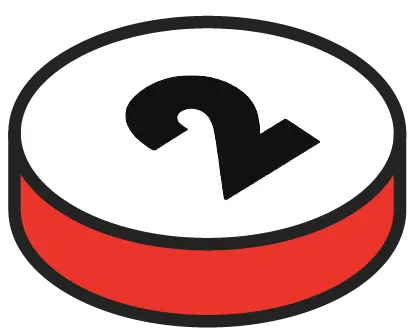[et_pb_section fb_built=”1″ theme_builder_area=”post_content” _builder_version=”4.27.4″ _module_preset=”default”][et_pb_row _builder_version=”4.27.4″ _module_preset=”default” theme_builder_area=”post_content”][et_pb_column _builder_version=”4.27.4″ _module_preset=”default” type=”4_4″ theme_builder_area=”post_content”][et_pb_text _builder_version=”4.27.4″ _module_preset=”default” theme_builder_area=”post_content” hover_enabled=”0″ sticky_enabled=”0″]
In the competitive world of manufacturing, ensuring optimal equipment efficiency is essential for maintaining high productivity. OEE (Overall Equipment Effectiveness) monitoring software offers a powerful solution for companies to improve machine performance, reduce downtime, and enhance overall production effectiveness. By providing real-time insights and actionable data, this software enables manufacturers to make informed decisions that drive continuous improvement across the production line.
[/et_pb_text][/et_pb_column][/et_pb_row][et_pb_row _builder_version=”4.27.4″ _module_preset=”default” theme_builder_area=”post_content”][et_pb_column _builder_version=”4.27.4″ _module_preset=”default” type=”4_4″ theme_builder_area=”post_content”][et_pb_text _builder_version=”4.27.4″ _module_preset=”default” theme_builder_area=”post_content” hover_enabled=”0″ sticky_enabled=”0″]
What is OEE monitoring software?
OEE monitoring software is a specialized tool that helps manufacturing plants track, measure, and optimize the performance of their equipment. It provides real-time data on key metrics like availability, quality, and speed, offering valuable information to reduce losses and increase productivity.
Definition of OEE software
OEE software measures how well a machine or a production line operates by calculating its OEE score, which is based on three factors: availability, performance, and quality. This score reflects the overall effectiveness of the equipment in producing high-quality products without delays or issues.
Key features of OEE software
Key features of OEE monitoring software include real-time monitoring, downtime tracking, maintenance scheduling, and performance analysis. It also offers customized reports that provide visibility into losses and inefficiencies within the process. Advanced tools allow manufacturers to set standards for continuous improvement and reduce production cycle times.
Importance of OEE monitoring in production
OEE monitoring is crucial in the production environment as it helps companies address the root issues affecting equipment performance. By analyzing the data, companies can optimize the processes, minimize downtime, and ensure high-quality product output. This contributes to greater overall productivity and plant efficiency.
[/et_pb_text][/et_pb_column][/et_pb_row][et_pb_row _builder_version=”4.27.4″ _module_preset=”default” theme_builder_area=”post_content”][et_pb_column _builder_version=”4.27.4″ _module_preset=”default” type=”4_4″ theme_builder_area=”post_content”][et_pb_text _builder_version=”4.27.4″ _module_preset=”default” theme_builder_area=”post_content” hover_enabled=”0″ sticky_enabled=”0″]
Key benefits of OEE software
OEE monitoring software brings significant advantages to manufacturers, from increasing data accuracy to enabling comprehensive loss analysis. These features drive better decision-making and improve operational efficiency.
Improved data accuracy
OEE software delivers highly accurate real-time data, helping companies track equipment performance, speed, and availability with precision. This information minimizes manual errors and allows businesses to make data-driven decisions that positively impact the production process.
Loss analysis
By identifying areas of loss, OEE software enables companies to focus on the root causes of inefficiencies. This could include unplanned downtime, performance drops, or quality issues, all of which can be targeted for improvement to enhance overall effectiveness.
Historical perspective and benchmarking
OEE software stores historical data, allowing companies to benchmark past performance against current standards. This long-term perspective helps identify trends and provides context for continuous improvement efforts across manufacturing plants.
Production capacity analysis
Understanding production capacity is critical for optimizing manufacturing operations. OEE software helps businesses assess their full capacity and pinpoint underutilized equipment, thereby improving overall productivity and reducing costly downtime.
[/et_pb_text][/et_pb_column][/et_pb_row][et_pb_row _builder_version=”4.27.4″ _module_preset=”default” theme_builder_area=”post_content”][et_pb_column _builder_version=”4.27.4″ _module_preset=”default” type=”4_4″ theme_builder_area=”post_content”][et_pb_text _builder_version=”4.27.4″ _module_preset=”default” theme_builder_area=”post_content” hover_enabled=”0″ sticky_enabled=”0″]
How OEE software helps improve your manufacturing operations ?
OEE software plays a pivotal role in enhancing manufacturing operations by providing actionable insights through real-time tracking and comprehensive analytics. These tools help optimize machine performance and overall plant efficiency.
Real-time tracking and analysis
Real-time monitoring gives businesses instant access to critical performance data, such as downtime, speed, and quality. This immediate visibility allows companies to quickly address any performance issues and maintain smooth operations across the production line.
Continuous improvement analytics dashboard
OEE software includes an analytics dashboard that continuously tracks KPIs, offering insights into ongoing process improvements. This dashboard highlights areas of loss, enabling manufacturers to take corrective actions in real time and boost production effectiveness.
Departmental KPI displays
Displaying KPIs for individual departments improves transparency and accountability. OEE software visualizes metrics across departments, enabling better coordination and ensuring each section of the plant is aligned with performance goals to maximize overall productivity.
Downtime tracking and quality control
The software excels in downtime tracking, allowing manufacturers to reduce unplanned stoppages and improve maintenance scheduling. It also enhances quality control by identifying potential losses in the production process before they become major issues.
[/et_pb_text][/et_pb_column][/et_pb_row][et_pb_row _builder_version=”4.27.4″ _module_preset=”default” theme_builder_area=”post_content”][et_pb_column _builder_version=”4.27.4″ _module_preset=”default” type=”4_4″ theme_builder_area=”post_content”][et_pb_text _builder_version=”4.27.4″ _module_preset=”default” theme_builder_area=”post_content” hover_enabled=”0″ sticky_enabled=”0″]
How to measure OEE ?
Measuring OEE is essential for understanding the effectiveness of your equipment and production processes. OEE breaks down into three key metrics: availability, performance, and quality. By monitoring these factors, manufacturers can accurately assess equipment efficiency and make improvements.
OEE calculation methodology
The OEE score is calculated using the formula: OEE = Availability × Performance × Quality. Each factor is represented as a percentage. Availability measures the downtime, performance evaluates operational speed, and quality measures defect-free products. The combined data gives the overall OEE score, offering real insight into equipment losses and opportunities for improvement.
Practical examples and calculations
For instance, if a machine operates for 8 hours but experiences 1 hour of unplanned downtime, its availability is 87.5%. If it runs at 90% speed, its performance is 90%. Lastly, if 95% of the products meet quality standards, the final OEE score would be approximately 74.6%. This highlights areas to analyze for improved efficiency.
[/et_pb_text][/et_pb_column][/et_pb_row][et_pb_row _builder_version=”4.27.4″ _module_preset=”default” theme_builder_area=”post_content”][et_pb_column _builder_version=”4.27.4″ _module_preset=”default” type=”4_4″ theme_builder_area=”post_content”][et_pb_text _builder_version=”4.27.4″ _module_preset=”default” theme_builder_area=”post_content” hover_enabled=”0″ sticky_enabled=”0″]
Tips for using OEE software successfully
Implementing OEE software can greatly improve manufacturing operations, but success depends on using the tool effectively. Follow these tips to maximize the value of your OEE monitoring solution.
Choose simplicity
Select OEE software that is easy to use and understand. Complex tools can overwhelm users and reduce adoption. Focus on a solution that provides clear data and intuitive reporting, allowing teams to make quick decisions without excessive setup.
Create an OEE rule book
Establish a standard rule book to ensure consistent OEE measurement across your plant. This ensures that every line follows the same criteria for calculating availability, performance, and quality, reducing discrepancies and improving the accuracy of reports.
Establish accurate ideal cycle times
Set realistic cycle times for each piece of equipment. Accurate cycle times are critical to determining true performance levels and losses. Without a well-defined standard, it becomes difficult to evaluate process efficiency effectively.
Set achievable OEE goals
Setting realistic and achievable OEE goals motivates teams to strive for continuous improvement. Rather than aiming for perfect OEE, aim for incremental gains that reflect true improvements in productivity and equipment effectiveness.
Start with your shift meetings
Integrate OEE data into daily shift meetings to keep teams informed about the performance of their machines. By discussing OEE results regularly, your team stays aligned and focused on addressing the key issues impacting production efficiency.
[/et_pb_text][/et_pb_column][/et_pb_row][et_pb_row _builder_version=”4.27.4″ _module_preset=”default” theme_builder_area=”post_content”][et_pb_column _builder_version=”4.27.4″ _module_preset=”default” type=”4_4″ theme_builder_area=”post_content”][et_pb_text _builder_version=”4.27.4″ _module_preset=”default” theme_builder_area=”post_content” hover_enabled=”0″ sticky_enabled=”0″]
Features and options of OEE software
OEE software comes with a variety of features and customization options to help manufacturers optimize their production processes. These features ensure seamless connectivity, real-time visibility, and flexibility for specific manufacturing needs.
Equipment connectivity (OPC & MQTT)
OEE software can integrate with equipment using protocols like OPC and MQTT. This connectivity allows for real-time data exchange, improving the availability and accuracy of machine performance monitoring. Tools like Evocon offer such integrations, providing better visibility across the plant.
Customization options
Customization options are key to adapting OEE software to your specific needs. From creating personalized dashboards to setting up specialized reports, OEE software can be tailored to analyze different aspects of the process, ensuring the right information is always accessible.
[/et_pb_text][/et_pb_column][/et_pb_row][et_pb_row _builder_version=”4.27.4″ _module_preset=”default” theme_builder_area=”post_content”][et_pb_column _builder_version=”4.27.4″ _module_preset=”default” type=”4_4″ theme_builder_area=”post_content”][et_pb_text _builder_version=”4.27.4″ _module_preset=”default” theme_builder_area=”post_content” hover_enabled=”0″ sticky_enabled=”0″]
Benefits of implementing OEE software
Integrating OEE monitoring software into your operations brings numerous benefits, from enhancing productivity to reducing operating costs, while supporting lean manufacturing initiatives.
Return on investment
OEE software provides a strong ROI by improving equipment performance and reducing downtime. The better visibility into your processes helps prevent unexpected stoppages, increasing overall plant productivity and driving significant cost savings over time.
Lowering operating costs
By identifying losses and optimizing maintenance schedules, OEE software helps lower operating costs. The insights gained allow you to reduce wasted resources, improve product quality, and maximize production output without overextending resources.
Embracing lean manufacturing
OEE software supports lean manufacturing by helping eliminate waste and improve process effectiveness. With real-time data on equipment performance, manufacturers can adopt lean practices that minimize inefficiencies and reduce unnecessary downtime, driving higher efficiency.
[/et_pb_text][/et_pb_column][/et_pb_row][et_pb_row _builder_version=”4.27.4″ _module_preset=”default” theme_builder_area=”post_content”][et_pb_column _builder_version=”4.27.4″ _module_preset=”default” type=”4_4″ theme_builder_area=”post_content”][et_pb_text _builder_version=”4.27.4″ _module_preset=”default” theme_builder_area=”post_content” hover_enabled=”0″ sticky_enabled=”0″]
FAQ about OEE software
[/et_pb_text][et_pb_accordion _builder_version=”4.27.4″ _module_preset=”default” theme_builder_area=”post_content” hover_enabled=”0″ sticky_enabled=”0″][et_pb_accordion_item title=”What is OEE software ?” _builder_version=”4.27.4″ _module_preset=”default” theme_builder_area=”post_content” open=”on” hover_enabled=”0″ sticky_enabled=”0″]
OEE software is a tool that tracks, measures, and analyzes the performance, availability, and quality of manufacturing equipment. It helps companies monitor machine efficiency and identify areas for improvement, ensuring more effective production processes.
[/et_pb_accordion_item][et_pb_accordion_item title=”What does 85% OEE mean ?” _builder_version=”4.27.4″ _module_preset=”default” theme_builder_area=”post_content” open=”off” hover_enabled=”0″ sticky_enabled=”0″]
An OEE score of 85% indicates that the machine is operating at 85% of its full potential when considering availability, performance, and quality. This is considered world-class OEE in most industries and shows that the process is running smoothly with minimal losses.
[/et_pb_accordion_item][et_pb_accordion_item title=”How to measure OEE ?” _builder_version=”4.27.4″ _module_preset=”default” theme_builder_area=”post_content” open=”off” hover_enabled=”0″ sticky_enabled=”0″]
OEE is measured by multiplying availability, performance, and quality. These metrics are calculated based on machine uptime, speed compared to the ideal cycle time, and the proportion of defect-free products. The final score reflects overall equipment effectiveness.
[/et_pb_accordion_item][et_pb_accordion_item title=”Is OEE a KPI ?” _builder_version=”4.27.4″ _module_preset=”default” theme_builder_area=”post_content” open=”off” hover_enabled=”0″ sticky_enabled=”0″]
Yes, OEE is a key performance indicator (KPI) used in manufacturing to measure the effectiveness of production equipment. It helps businesses track how well their machines are operating and where there are opportunities to improve productivity and reduce losses.
[/et_pb_accordion_item][/et_pb_accordion][/et_pb_column][/et_pb_row][/et_pb_section]


 Process analysis: Observe existing flows and identify inefficiencies.
Process analysis: Observe existing flows and identify inefficiencies. Identify waste: Map unnecessary tasks to be eliminated.
Identify waste: Map unnecessary tasks to be eliminated. Deploy Lean tools: Integrate appropriate methods (5S, Kanban…).
Deploy Lean tools: Integrate appropriate methods (5S, Kanban…). Train teams: Raise awareness and involve employees in the approach.
Train teams: Raise awareness and involve employees in the approach. Monitoring and continuous improvement: Regularly adjust processes to guarantee performance.
Monitoring and continuous improvement: Regularly adjust processes to guarantee performance.






